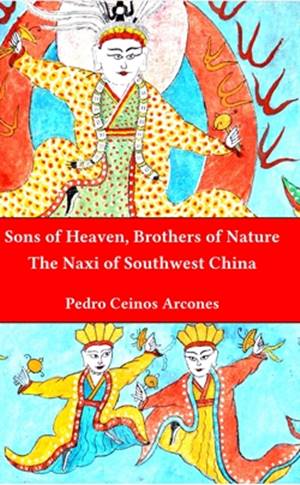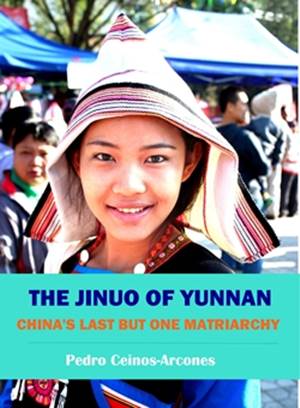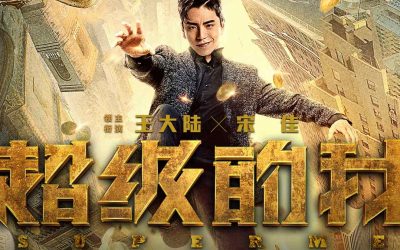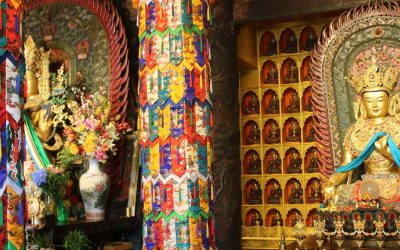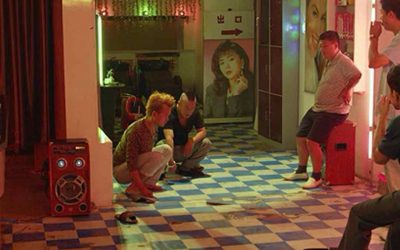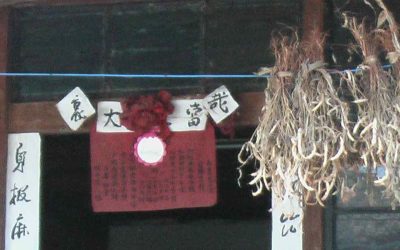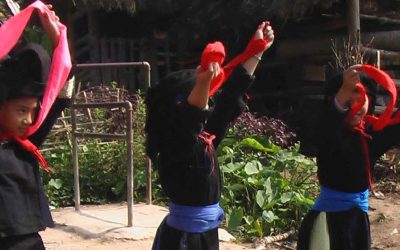Peter Harvey. Buddhism: Teachings, History and Practices. Cambridge University Press. 2013.
(Excerpts from the book. Page 11 and ff.)
In its origin, Buddhism was a Samana-movement. Samanas were wandering ‘renunciant’ thinkers who were somewhat akin to the early Greek philosophers and mystics. The Samanas rejected the Vedic tradition and wandered free of family ties, living by alms, in order to think, debate and investigate. The main Samana groups of Buddha’s time were:
JAINS
Jainism was founded, or at least led in the Buddha’s day, by Vardhamāna the Mahāvīra, or ‘Great Hero’. It teaches that all things, even stones, are alive, each containing a Jīva, or ‘Life-principle’. These are seen as individually distinct, rather like the Western idea of a ‘soul’ but unlike the universal Ātman of the Upanisads, and to be naturally bright, omniscient and blissful. The aim of Jainism is to liberate one’s Jīva from the round of rebirths by freeing it from being weighed down by an encrustation of karma, seen as a kind of subtle matter. The methods of doing so are primarily austerities such as fasting, going unwashed and pulling out the hair, so as to wear out the results of previous karma, and self-restraint, total non-violence to any form of life, and vegetarianism, so as to avoid the generation of new karma. The free-will of the Jīva is emphasized, though even actions such as unintentionally killing an insect are held to generate karma.
AJIVIKAS
Their founder was Makkhali Gosāla (Skt Maskarin Gośāla). Gosāla’s key doctrine was that niyati, or impersonal ‘destiny’, governed all, such that humans had no ability to affect their future lives by their karma: actions were not freely done, but were determined by niyati. Gosāla thus believed in rebirth, but not in the principle of karma as that which regulates the level of a person’s rebirth. The ‘Life-principles’ of living beings are driven by niyati alone through a fixed progression of types of rebirths, from a low form of animal to an advanced human who becomes an Ājīvika ascetic. The Ājīvikas practised rigorous asceticism such as fasting, nakedness and perhaps also disfiguring initiations, and aimed to die by self-starvation (as Vardhamāna in fact did), as a fitting way to end their last rebirth.
MATERIALISTS
The Materialists’ aim was to lead an abstemious, balanced life which enjoyed simple pleasures and the satisfaction of human relationships. They denied any kind of self other than one which could be directly perceived, and held that this was annihilated at death. They therefore denied the idea of rebirth, and also those of karma and niyati. Each act was seen as a spontaneous event without karmic effects, and spiritual progression was not seen as possible.
SKEPTICS
The Skeptics responded to the welter of conflicting theories on religious and philosophical issues, and the consequent arguments, by avoiding commitment to any point of view, so as to preserve peace of mind. They held that knowledge on such matters was impossible, and would not even commit themselves to saying that other people’s views were wrong. The Buddha saw this evasive stance as ‘eelwriggling’, though he shared the wish to step aside from the ‘jungle’ of conflicting views, and avoid dogmatic assertions built on flimsy grounds.
More posts on Chinese culture
Super me – A beautiful adaptation of Lu Dongbin dream
Super me - A beautiful adaptation of Lu Dongbin dream In Brief: An adaptation of the myth of Taoist sage Lu Dong ping to the modern world. It manages to maintain a steady interest and combine Taoist teachings with some moralizing provided by the director. A failed...
The Filial Peasant Girl – A Buddhist Miracle Tale
The Filial Peasant Girl - A Buddhist Miracle Tale With the arrival of Buddhism in China, in addition to translating the main canonical scriptures, other more popular religious literature began to emerge, which by means of some tales narrating either the benefits of...
Shock Wave 2- An entertaining action movie
Shock Wave 2- An entertaining action movie In short: A nice movie, with an original script, plenty of surprises, the right dose of love, and a slightly exaggerated dose of violence, but nothing excessive for what is fashionable nowadays. The year 2020 seems to have...
Hong Ying- An Art of Love without art and without love
Hong Ying- An Art of Love without art and without love In Brief: A scandalous novel that fails to shock, and an art of love that is conspicuous by its absence. Already from the beginning, we know that this is a love story without a future because the novel begins with...
Black Coal, Thin Ice, by Diao Yinan
Black Coal, Thin Ice, by Diao Yinan In short: a film narrated in a gray and sometimes sordid atmosphere, in a dark winter, of climate and spirit, which presents a mystery in which the viewer is gradually seduced. In an eminently mining region, human limbs begin to...
Xian, the ancient imperial capital
Xian, the ancient imperial capital In short: The ancient city inside the city wall retains a fascinating atmosphere. Its great monuments on the outskirts, such as the Terracotta Warriors, are among China's favorite attractions. Xian is undoubtedly one of the most...
More posts on China ethnic groups
Zhuang Folk Tales from Wuming
Zhuang Folk Tales from Wuming This book is a good sample of the folk literature of the Zhuang people living around Wuming County. Though formally separated in six chapters under the epigraphs of Traditional virtues, Bravery and Diligence, Cleverness and Creativity,...
Researches on the Mo culture of the Zhuang
Researches on the Mo culture of the Zhuang (壮族墨文化研究 Zhuang zu mo wenhua yanjiu). Huang Guiqiu。 Nationalities Press. Beijing. 2006. 321 pp Mo culture of the Zhuang refers to the Mo beliefs of the Zhuang and the Buyi nationalities; as their culture share a high...
Deciphering the culture of the fertility cults
Deciphering the culture of the fertility cults (生殖崇拜的文化解读 Shengzhi chongbai de wenhua jiedu). Liao Mingjun. Guangxi Peoples Press. Nanning, 2006 This book is a study of the fertility cults among the Chinese nationalities. Introducing the reader the different...
Pregnancy and Birth ceremonies among the Sha branch of the Zhuang
Pregnancy and Birth ceremonies among the Sha branch of the Zhuang The Sha are one of the branches of the Zhuang. They live in Yunnan province. The birth of a new child among them is surrounded by rituals that present significant differences from those of other...
Some dances of the Zhuang people
Some dances of the Zhuang people The Zhuang have a number of dances. Originating from different periods of their history, it is thought that the older ones have a ritual origin, imitating the movements of their shamans during their religious ceremonies. In general...
Festivals of the Zhuang Nationality
Festivals of the Zhuang Nationality New Year The most important festival of the Zhuang year. Their celebration is similar to that of the local Chinese, although with some special characteristics. The children play their traditional games. In Wenshan County horse...


